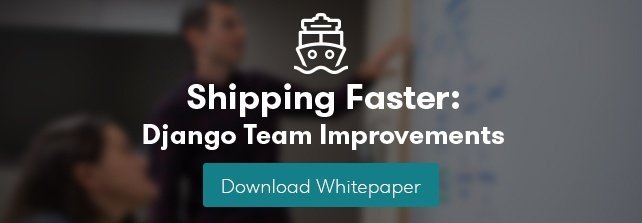
Looking for some pointers to improve my own client management skills, I scoured the internet to find practical ideas on how to handle challenges better as the product owner (PO) in a client-services organization. I came up completely short.
Using Scrum in a client-services organization comes with its own unique challenges. As the product owner (PO), you are technically the project’s key stakeholder (along with many other responsibilities nicely outlined here). However, when serving as a PO with external clients you hold the responsibility, but not always the power, to make the final decisions on the priorities and final features of the product. Clients sometimes have an idea of what they want, but it may run counter to what you and your team recommend based on your experiences (which is why the client hired you in the first place! It is okay to offer alternatives to their requests, as long as you can back it up with facts). Ultimately the client makes the final decision, but it is our job to give them our best recommendations.
Some companies designate the client as the PO, with all of the responsibilities that go along with that. This approach is often not feasible at Caktus since our clients are off-site, not part of the Scrum team, and have many other external responsibilities that do not involve our project. The client is the subject expert, but not necessarily well-versed enough in Scrum or software development to have the skill set to be a good PO at a technical level.
Here are some tips that I think are helpful for working with non-technical, external clients when using Scrum.
Set and reinforce expectations
You can explain Scrum in detail and give real-world situations to help build an understanding of what it entails, but until a person works within that framework, their full grasp of it will be limited. If your client is working in a less technical environment, it is likely Scrum is new to them. Use any opportunity (discovery phase, Sprint Zero, every review and relevant communication) as an opportunity to underscore what you need from them as a client to help make this project successful. At Caktus, Scrum represents uncharted territory for many of our customers, but the process works because we treat each project as a learning opportunity, incrementally reinforcing the process and improving the agility of our partnership throughout the project.
Be transparent, but take into account the client’s background
In the name of transparency, we always offer clients full access to our ticket tracker and product backlog, a detailed release plan for the most valuable features listing out all the tickets we believe we can achieve within the sprints, a breakdown of and calendar invites for all the sprint activities for the team, and how the activities relate to their particular project (i.e., in backlog grooming we do ABC, in sprint planning we do XYZ, etc.).
Too much information, however, can be paralyzing. Get to know your client (how technical they are, how much time they have to be involved in the project, etc.) before deciding what information will be most helpful for them. The whole point is to create a product that delights the client, and make the process of getting there as smooth and easy as possible.
A client with limited technical knowledge may find digging through a product backlog requires more time than they have. Instead, you can give them consistent updates in other formats, even something as simple as a bulleted list. For example: “These are the tickets we are going to estimate in backlog grooming on Tuesday. Please review the user stories and the Acceptance Criteria (AC) to ensure it aligns with what you feel is important for this feature.” At Caktus, we typically take on the day-to-day management of the product backlog, based on our understanding of the project and the relative priorities communicated to us by our clients. For some clients this can take the place of having full access to everything, which at times serves more to overwhelm than to inform.
Similarly, the release plan should be built around certain features rather than specific tickets. Since a release plan is a best guess based on the initial estimates of the team and is constantly being adjusted, including features to be completed rather than specific tickets gives the team the means to focus attention on meeting the overarching project goals. Hewing to the release plan is not always possible, but when you can do it, it makes things less stressful for your client.
(Over) Communicate
There is a lot to accomplish in a sprint review meeting. You need to talk about what was accomplished, share it with the client, discuss their feedback on the completed work, talk about priorities for the upcoming sprint, and then possibly make adjustments based on the feedback that came out of the review. To help take the pressure off the client to review everything, give feedback, and think about next steps in a one-hour meeting, let clients know when features are ready for review on staging, in advance of the sprint review. That way they have ample time to play around with the features. By the time sprint review comes, they have a solid understanding of progress and we can use the sprint review to walk through specific feedback.
We recommend writing up your upcoming sprint goals as early as you can and sharing them ahead of time. It's important to note that these are only the goals, and that the team decides what they pull into the sprint. Then, after sprint planning, keep the client updated on which features your team was able to pull into the sprint so their expectations are set appropriately.
If you need something from a client, just ask. Explaining dependencies also helps (i.e., adjusting this feature too far down the road will be more expensive than fixing it now, so please give us feedback by X date so we can address it soon). Throughout my four-plus years at Caktus, I've found that technical expertise is only half the battle, and our most successful projects are those in which we stay in constant communication in with the client.
Compromise when it makes sense for the client and for your team
Some clients are not comfortable using or navigating the tools we use every day. Therefore, if it helps a client to, for example, download ticket details from JIRA into an Excel spreadsheet formatted in a way that allows them to understand something better, it is worth the extra time and effort. However, keep in mind the overall balance of time and effort. If they ask you to keep a shared spreadsheet updated in real time with all updates in JIRA, help them understand why that might not be a good idea, and come up with some alternative solutions to get them what they need.
Conclusion
Much of what is out there on the internet related to project ownership is related to being a PO at a software company, with internal stakeholders. Having external clients doesn’t make Scrum impossible; it just makes it a little bit more challenging, and requires some tweaking to keep your client - and your team - happy!


